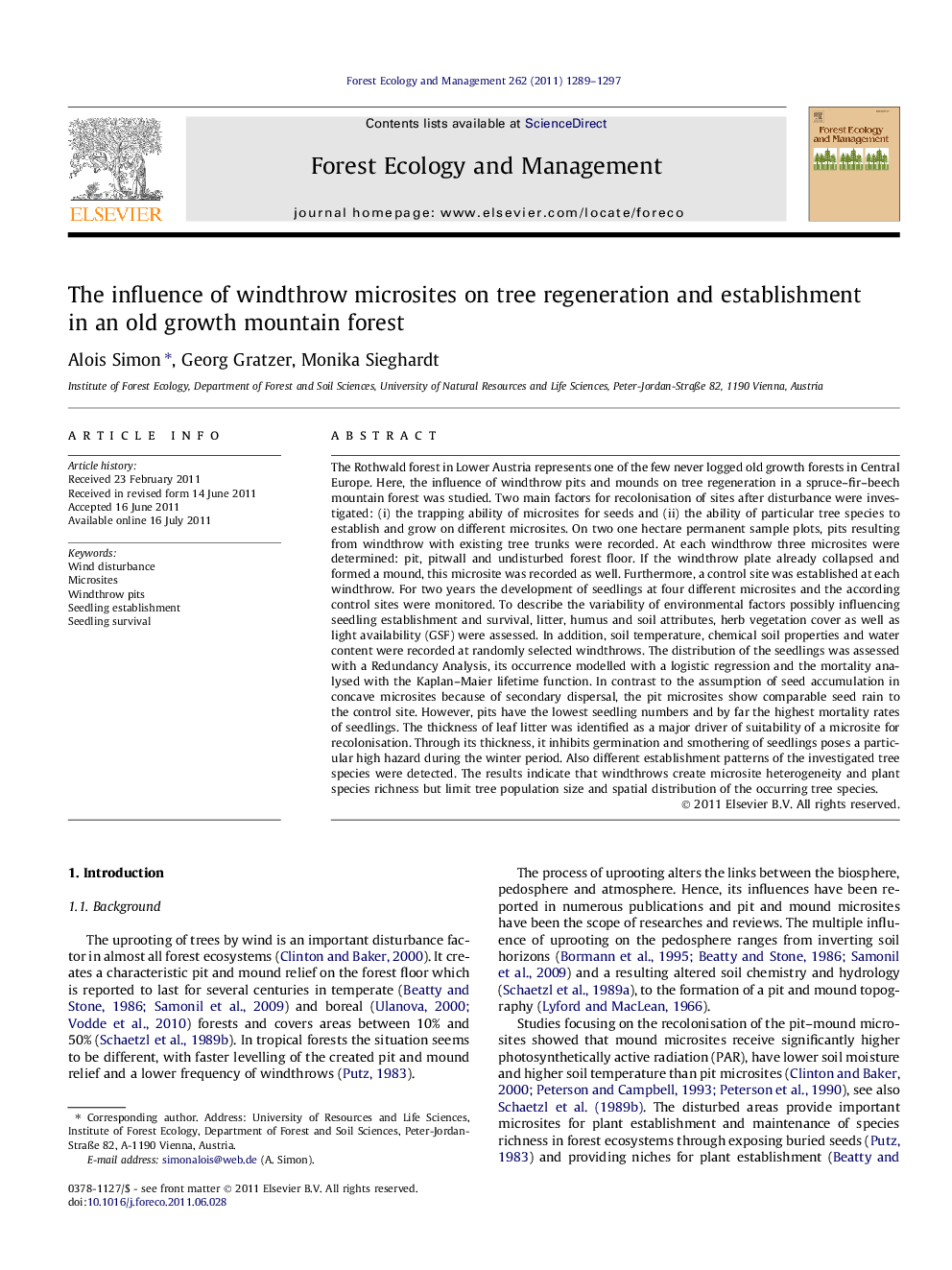| کد مقاله | کد نشریه | سال انتشار | مقاله انگلیسی | نسخه تمام متن |
|---|---|---|---|---|
| 88004 | 159276 | 2011 | 9 صفحه PDF | دانلود رایگان |

The Rothwald forest in Lower Austria represents one of the few never logged old growth forests in Central Europe. Here, the influence of windthrow pits and mounds on tree regeneration in a spruce–fir–beech mountain forest was studied. Two main factors for recolonisation of sites after disturbance were investigated: (i) the trapping ability of microsites for seeds and (ii) the ability of particular tree species to establish and grow on different microsites. On two one hectare permanent sample plots, pits resulting from windthrow with existing tree trunks were recorded. At each windthrow three microsites were determined: pit, pitwall and undisturbed forest floor. If the windthrow plate already collapsed and formed a mound, this microsite was recorded as well. Furthermore, a control site was established at each windthrow. For two years the development of seedlings at four different microsites and the according control sites were monitored. To describe the variability of environmental factors possibly influencing seedling establishment and survival, litter, humus and soil attributes, herb vegetation cover as well as light availability (GSF) were assessed. In addition, soil temperature, chemical soil properties and water content were recorded at randomly selected windthrows. The distribution of the seedlings was assessed with a Redundancy Analysis, its occurrence modelled with a logistic regression and the mortality analysed with the Kaplan–Maier lifetime function. In contrast to the assumption of seed accumulation in concave microsites because of secondary dispersal, the pit microsites show comparable seed rain to the control site. However, pits have the lowest seedling numbers and by far the highest mortality rates of seedlings. The thickness of leaf litter was identified as a major driver of suitability of a microsite for recolonisation. Through its thickness, it inhibits germination and smothering of seedlings poses a particular high hazard during the winter period. Also different establishment patterns of the investigated tree species were detected. The results indicate that windthrows create microsite heterogeneity and plant species richness but limit tree population size and spatial distribution of the occurring tree species.
► For two years, seedlings in different windthrow microsites were monitored.
► No seed accumulation in concave microsites, caused by secondary dispersal, was observed.
► Pit microsites showed lowest seedling occurrence and highest mortality.
► Mortality peaked in summer for beech and during winter for the conifers.
► Leaf litter thickness of more than 2 cm inhibits germination and increases mortality.
► Segregated regeneration niches between spruce and beech/fir but not between beech and fir.
Journal: Forest Ecology and Management - Volume 262, Issue 7, 1 October 2011, Pages 1289–1297